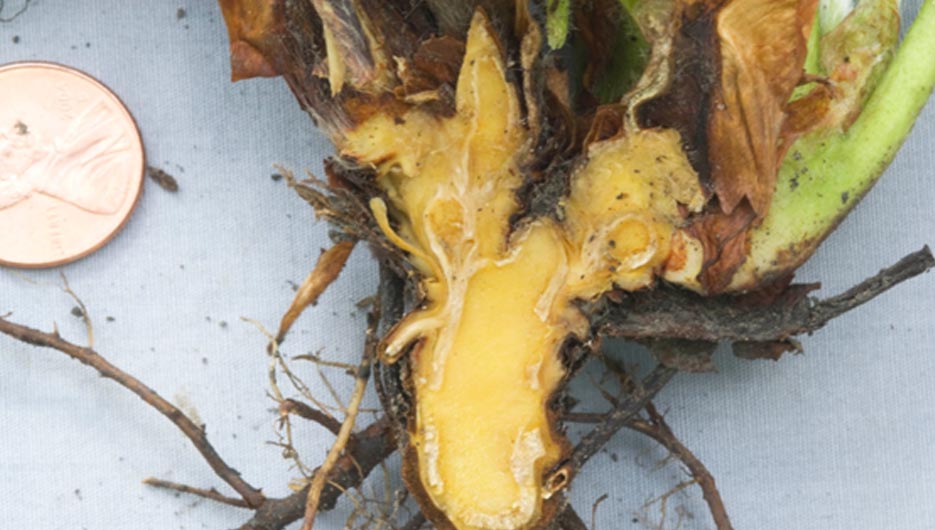
Crop Protection (2022)
Vascular wilt diseases caused by fungal and bacterial pathogens are the most damaging plant diseases that affect both annual crops and woody perennials. Soil-borne fungus, bacteria, and oomycetes infect the roots and penetrate the water-conducting xylem vessels, where they proliferate and block water and mineral transfer.
To control this group of pathogens, several approaches have been conducted such as chemical, genetic, and biological measures. However, genetic and biological approaches are the only effective alternatives to control this pathogen in a sustainable eco-production context. Among all biological control, arbuscular mycorrhizal fungi (AMF) are currently a promising new approach to control soil-borne pathogens. The current state of knowledge on the effect of AMF on vascular wilt diseases and interactions of vascular wilt pathogens with their host plants during the last 20 years is discussed in this review, with a focus on Verticillium, Fusarium, and Bacterial wilts.
This review discusses also host defense responses against this group of diseases. The majority of studies used Rhizophagus irregularis and Funneliformis mosseae species to investigate the AMF effect. These AMF species improved plant resilience to environmental and transplanted challenges by stimulating root development, plant growth and development, and improving tolerance to soil-borne pathogens. The dual inoculation of AMF and Pseudomonas fluorescens and Trichoderma sp. has been found as the most efficient biocontrol agents against vascular wilt diseases.
https://www.sciencedirect.com/science/article/abs/pii/S0261219422000345?via%3Dihub
Photo: Base of a strawberry plant infected by Verticilliu ((https://ucanr.edu/blogs/fresamora//blogfiles/17371_original.jpg)


